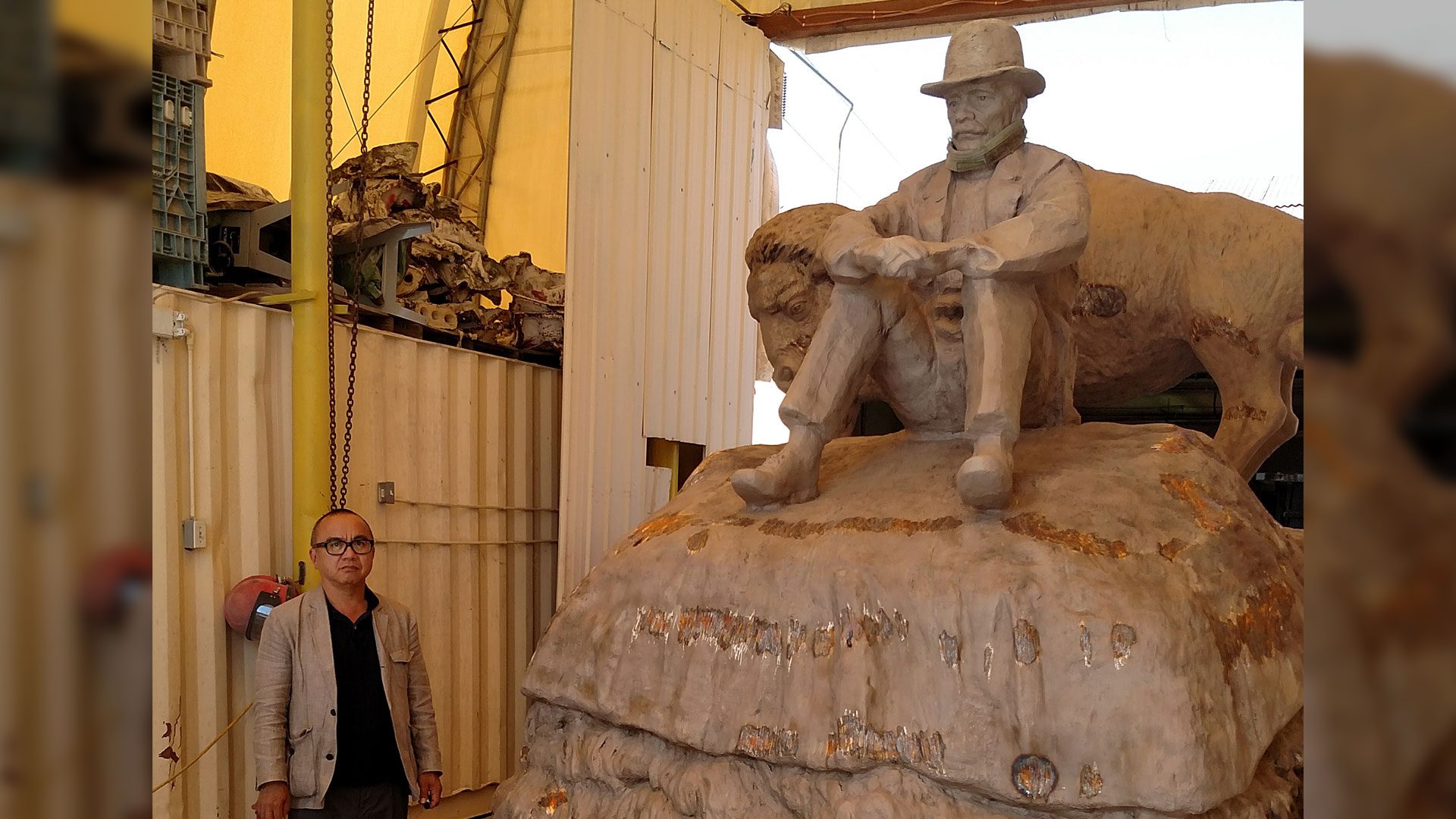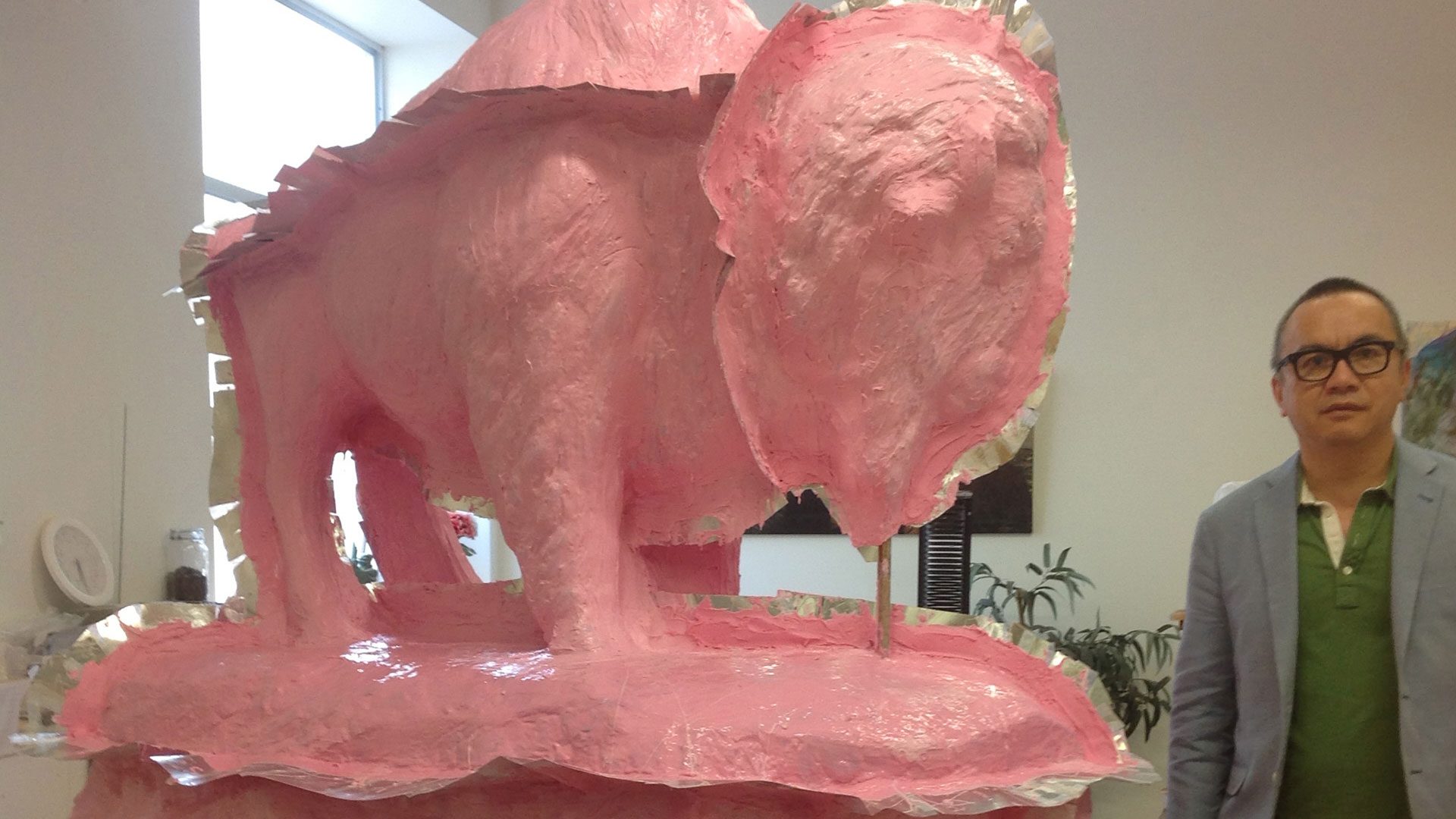
Bronze statue of a buffalo and a fur trader by Ken Lum sits in storage. Photo: Supplies
A sculpture depicting the tensions of colonial relations between the Indigenous community and the state has been sitting in a storage facility in Edmonton since 2016.
The piece created by artist Ken Lum was commissioned as part of the design of the Walterdale Bridge.
“I am open to speaking about it, even if some people think it is problematic,” says Lum. “Especially from a public institution like the Edmonton Arts Council.”
The artwork would have been displayed in the Rossdale neighbourhood, which recently was the subject of discussion when a company proposed to build a Gondola station in the area that is historically important to the Indigenous community.

The statue is made of bronze and stainless steel; the buffalo is almost four metres tall and the fur trader sitting atop a pile of buffalo hides is 3.5 metres high.
Lum says the statue is meant to depict the uneasy relationship between the settler state and Indigenous peoples.
His intent was for the buffalo and the fur trader to regard one another warily across the pedestrian part of the bridge.
“This relationship, troubling as it is, is very much at the centre of the problems that the world faces regarding the disregard of what (French philosopher Michel) Foucault called subjugated knowledges,” says Lum, “that is knowledges that are not deemed worthy because it’s not scientific.”
“It’s often story telling. It’s often … the knowledge is gained over millennia from Indigenous peoples around the world.”
Award
Lum won the Governor General’s Award in Visual and Media Arts in 2020 and is also part of the Monument Lab in the United States, a non-profit organization and research studio dedicated to examining how history is told in the public landscape.
Lum is non-Indigenous but says he worked with Indigenous elders and community members on the bridge project.
“I made half a dozen visits, maybe even 10 visits,” he says. “I was accompanied by the Edmonton Arts Council (EAC).”
Lum’s other work includes writings that reflect on colonization.
“I was always interested in that sort of duality,” he says. “The definition of state, of Canada, for example, isn’t the Rocky Mountains or wheatfields and grain elevators and then different coloured people holding hands and so on.
“The definition of the state, to me, is what are the two symbols at the extremes of a state that really speak of the highest symbolic value of state and the worst treated of the state? For me, it’s like a red serge (-wearing) Mountie is the epitome of the state at one end, and then the treatment of First Nations and Indigenous peoples at the other end.”

Lum says the EAC has not explained why the sculpture remains in storage.
EAC told APTN News the officials authorized to comment publicly are on vacation.
Lum says some of the feedback he received was positive, but others he spoke to suggested there should have been an Indigenous artist involved.
“The selection process was unusual,” Lum says of the contract process. “The city was wanting an artist with engineering and infrastructure experience to be a part of the bridge design as well as the public art.”
Sources familiar with the art and infrastructure process say due to a delay in the bridge construction there was a lot of pushback and they decided not to unveil any art to avoid further pushback. They also say the discussion on public art has changed and the city decided to shelve the art.
The City of Edmonton’s Indigenous relations office declined to speak to APTN.










